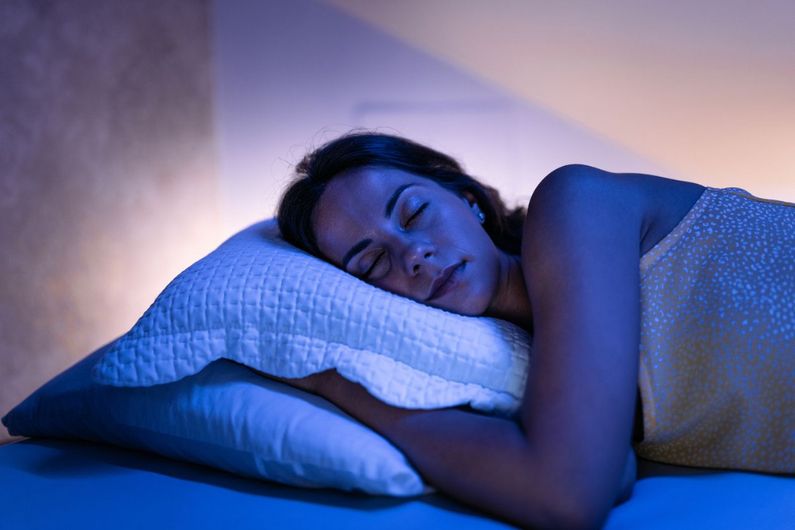Can “coloured noise” really improve our sleep?
- UdeMNouvelles
01/29/2024
- Béatrice St-Cyr-Leroux
In the never-ending quest for a good night’s sleep, the use of white, brown or pink noise is the latest thing. Solution or illusion?
One in four people suffer from some kind of sleep disorder—insomnia, sleep apnea, narcolepsy, hypersomnia, restless legs syndrome. And for a quarter of them, there is no effective, long-term solution. It is a public health issue.
Poor sleepers are an attractive market for private industry, always on the lookout for lucrative new opportunities. Myriad technological fixes already exist to help us sleep soundly: Web-connected mattresses, bedding that regulates temperature, apps that analyze sleep cycles, etc.
There are also devices that produce “coloured noise, whether it be white noise, which combines all audible frequencies; pink noise, which amplifies the lower frequencies and reduces the higher ones; or brown noise, which skews even more strongly towards the low frequencies.
The companies that sell these devices claim that investing in a quality sound device can help you fall asleep and stay asleep. But is it true? Can auditory stimulation actually improve your quality of sleep?
Julie Carrier, a professor in the Department of Psychology at Université de Montréal and researcher at the Centre for Advanced Research in Sleep Medicine at Hôpital du Sacré-Cœur de Montréal, has looked into it.
Important to stay alert
First, some basics.
While people's consciousness is reduced during sleep, their auditory system continues to evaluate sounds in the environment. “It’s important for the brain to stay alert, since sleep is a state of extreme vulnerability and you need to be able to react to dangers,” Carrier noted.
During “deep slow-wave sleep,” an electroencephalogram (EEG) will show slow waves of large amplitude in the brain. “The brain appears to be slowing down, but it’s actually working in waves,” Carrier explained.
“When the wave goes up, there’s a lot of brain activity, and when it goes down, the neuronal dendrites hyperpolarize. So the brain alternates between activity and quiescence.”
The brain is known to respond to sound during sleep. It was demonstrated about 10 years ago that some auditory signals produce more slow waves in the sleeping brain. However, this only works with very short signals sent at precisely the right time, namely on the upward slope of the wave, when there is considerable brain activity. And the brain must be connected to an EEG.
Does this mean that brain waves can be artificially induced by sounds?
Replicating the experiment
Carrier and her team replicated the decade-old experiment in their lab and arrived at the same result: a precise sound signal can indeed trigger the nervous system to produce slow waves.
“We were very excited," Carrier said, "because during slow-wave sleep, there are also what are called sleep spindles, which are faster little waves, and these two types of waves, the slow waves and the sleep spindles, are associated with brain plasticity, memory consolidation and deeper sleep."
It seemed to be a promising avenue of research to pursue, especially in the context of an aging population. However, after several years of research, the results have been disappointing. Carrier said.
“We were able to increase slow waves and sleep spindles and improve performance on a task learned just before bedtime, but we were unable to clearly show that these waves perform entirely the same functions as ‘naturally’ occurring waves.
“The impact on memory is not significant enough for us to recommend this approach for an aging person with memory loss. At this stage we have no evidence that these waves could improve sleep quality in a person suffering from insomnia.”
More research needed
The scientific evidence that a sound or sounds can improve sleep by influencing brain waves is therefore thin. Carrier pointed out, however, that anything that has a calming effect, such as white noise or music, could help some people.
“What I find very sad is that businesses are taking advantage of people who are willing to pay huge amounts to solve their sleep disorders; they're monetizing their distress,” she said.
Carrier believes that more needs to be invested in sleep research to find science-based solutions. Sleep quality should be a public health priority, she said, existing solutions, such as cognitive-behavioural therapy to treat insomnia, should be made more accessible.














